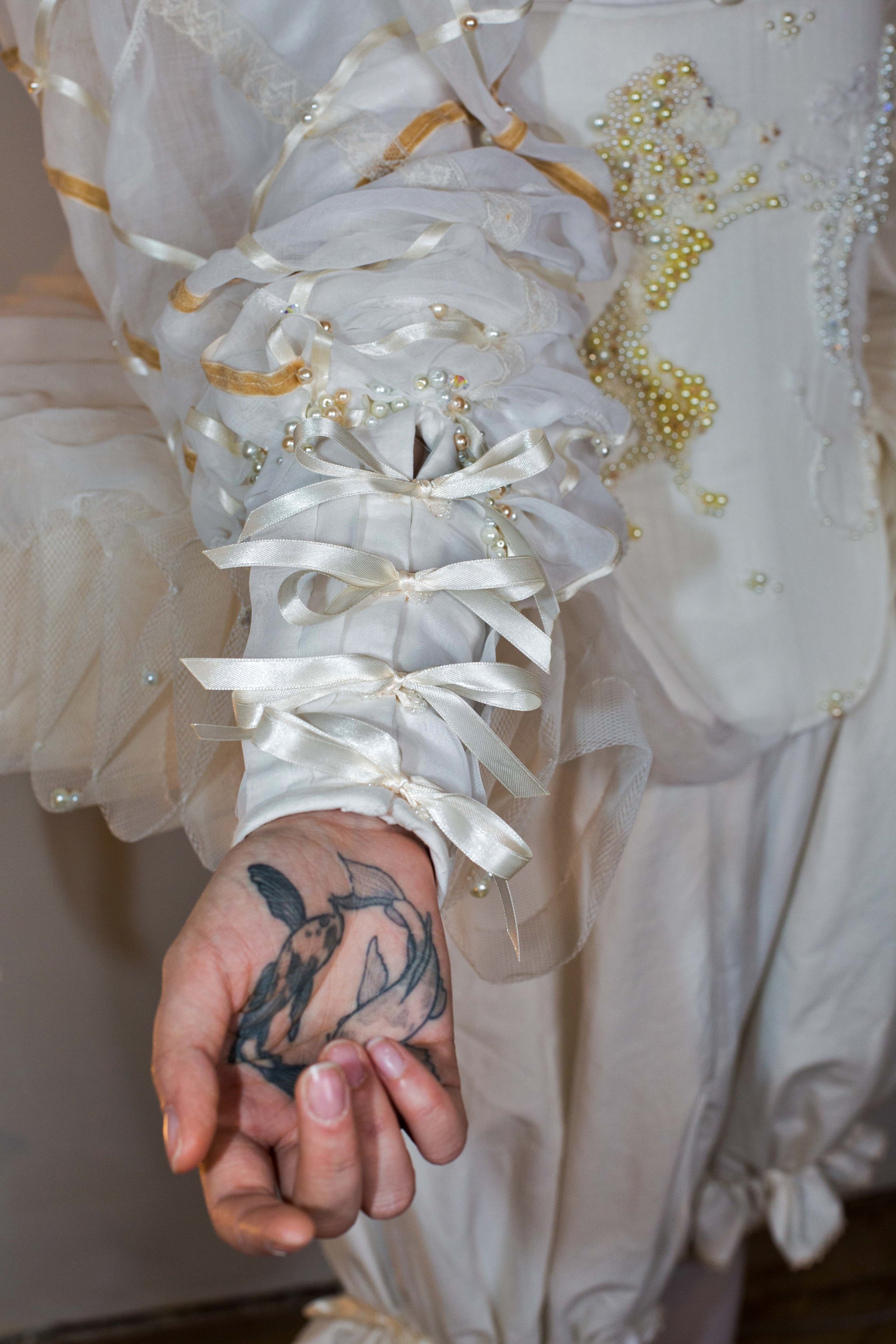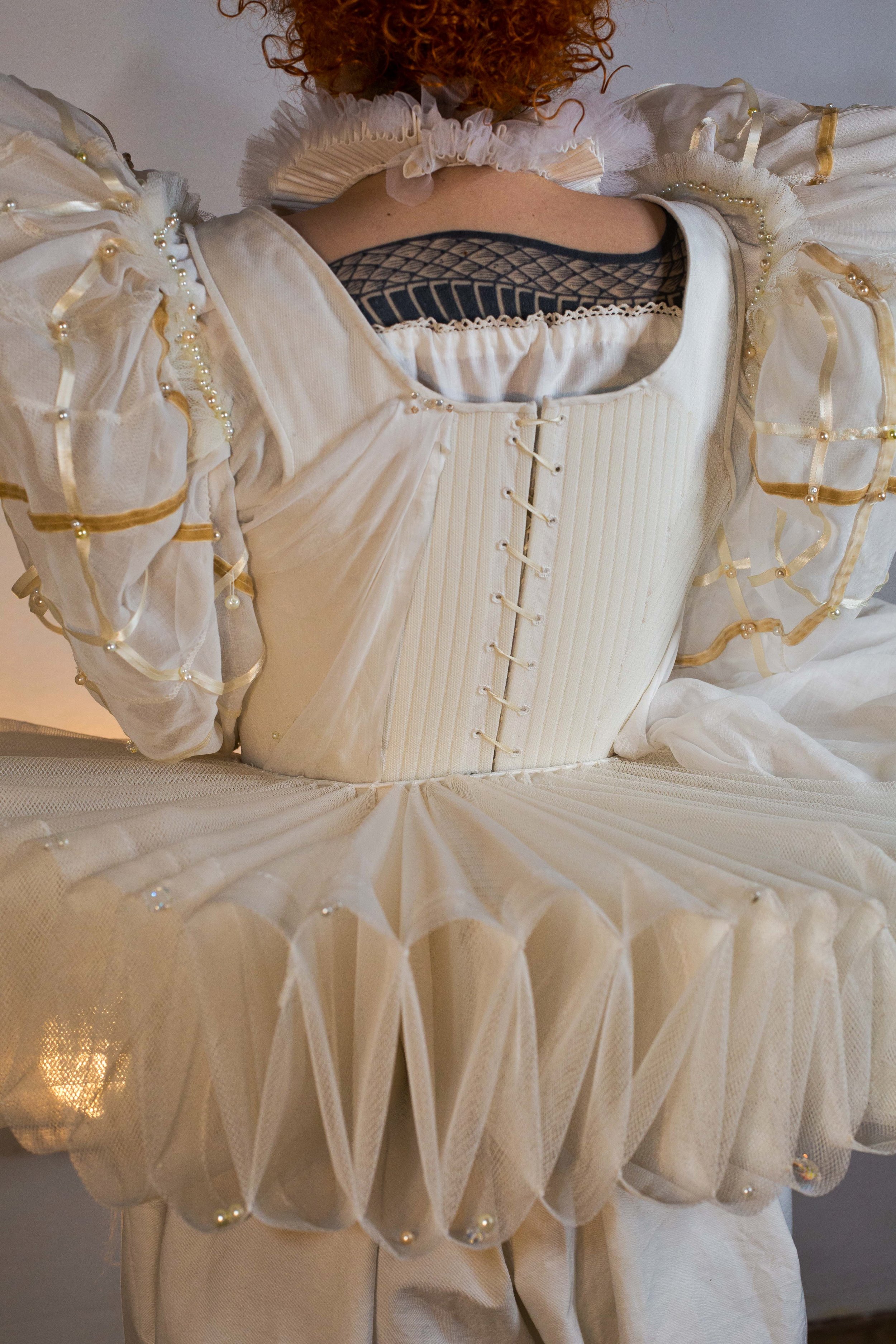married to england
a deconstructed wedding dress for Elizabeth I
‘‘My entry is inspired by the hypothetical wedding dress of Elizabeth I - complete with her coat of arms embroidered onto the bodice, large sleeves as were fashionable at the time, and a huge skirt. It is in all white, a nod to modern wedding dresses, and encrusted with pearls and crystals, to show the Queen’s power and wealth. But she never married and the dress was stored away for centuries, slowly disintegrating. The skirt was probably eaten by moths and the understructure (inspired by the ruffs worn around the neck) now reveals a pair of simple breeches: A garment usually worn by men. Elizabeth was in this unique position as a ruler of a country, that had always been ruled by men thus far, so I wanted to pay tribute and add the breeches as a subtle hint to that powerful woman in a man’s role.’’
This ensemble was made as an entry for the World of Wearable Art Awards 2021. One of the section themes was ‘Elizabethan’: I am deeply interested in historical fashion, but never feel the urge to replicate an exact garment - I need certain creative freedom for my own ideas. Naturally, the Elizabethan Era section was the perfect playground for me: It asked me to create something inspired by the era, but not necessarily to replicate it. As Elizabeth I is the central figure of this epoch, I decided to base my design on her. Her nickname ‘The Virgin Queen’ and the fact that she never married, gave me the idea to design her a wedding dress.
Making the whole ensemble was an intuitive process.
I started with the big embroidery for the bodice (a lion and a dragon, the animals of Elizabeth’s coat of arms) and then made the stays, patterned after actual Elizabethan era stays. I used layers of cotton organdy and tulle, as I wanted everything to be light and seem a bit fragile.
The sleeves are a big focal point of the whole garment: I used the same cotton organdy (which is vintage and was made in the 1930s) and an assortment of ribbons (i.a. some antique laces with actual rust stains). They close with ribbons, which is a nod to the fact that sleeves used to be tied onto bodices.
Another element is the skirt-ruff, made out of tutu-grade tulle. The construction is different from what would have been used historically, but I made it work for my purposes. The small ruff around the neck does use traditional techniques though, unusual is just my fabric choice.
The skirt is further embellished with various pearls and Swarovski crystals, and even the wig is encrusted with them. I used countless pearls and beads in various shapes, sizes and colours throughout all the pieces.
All images © Lukas Jahn








